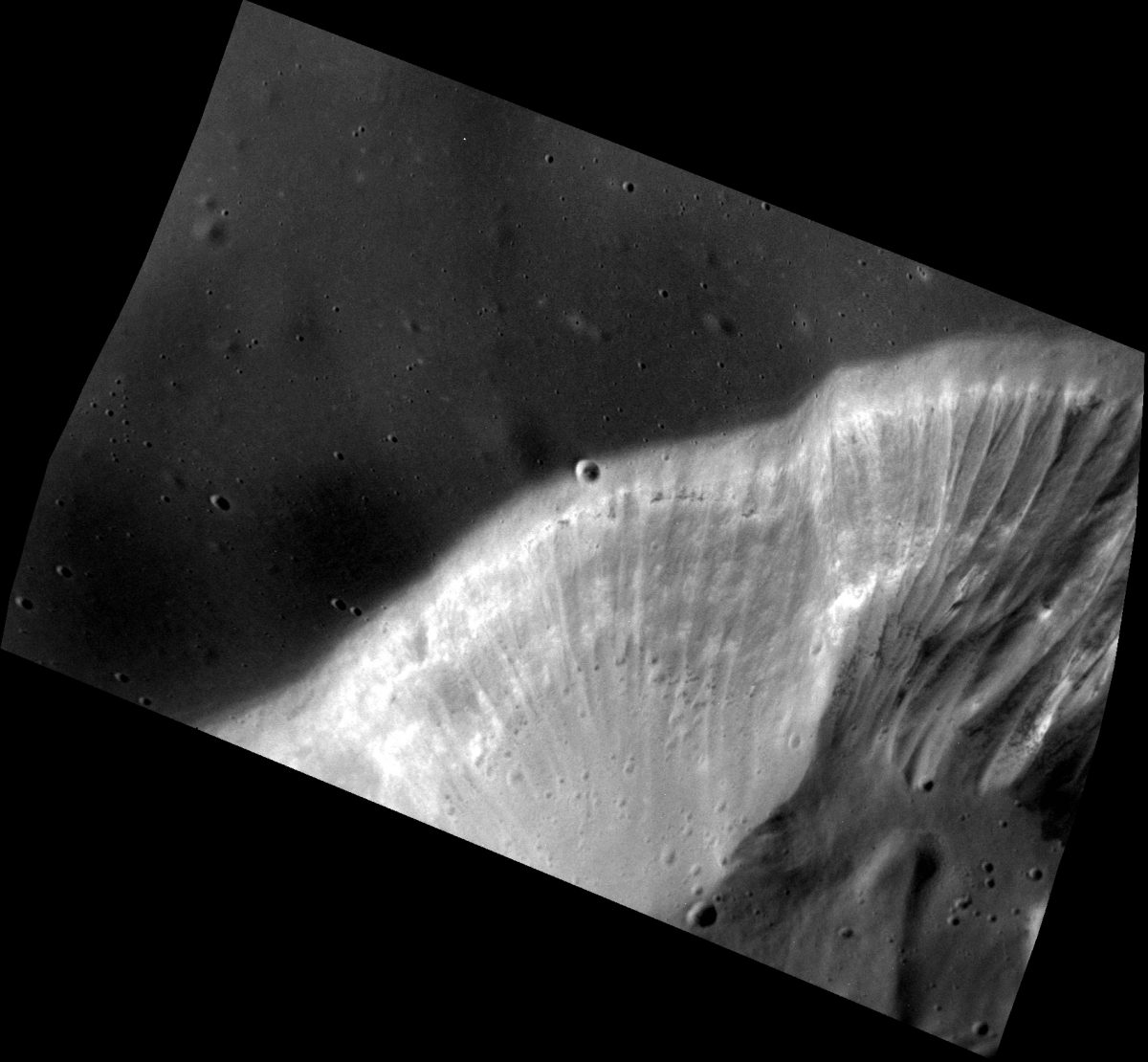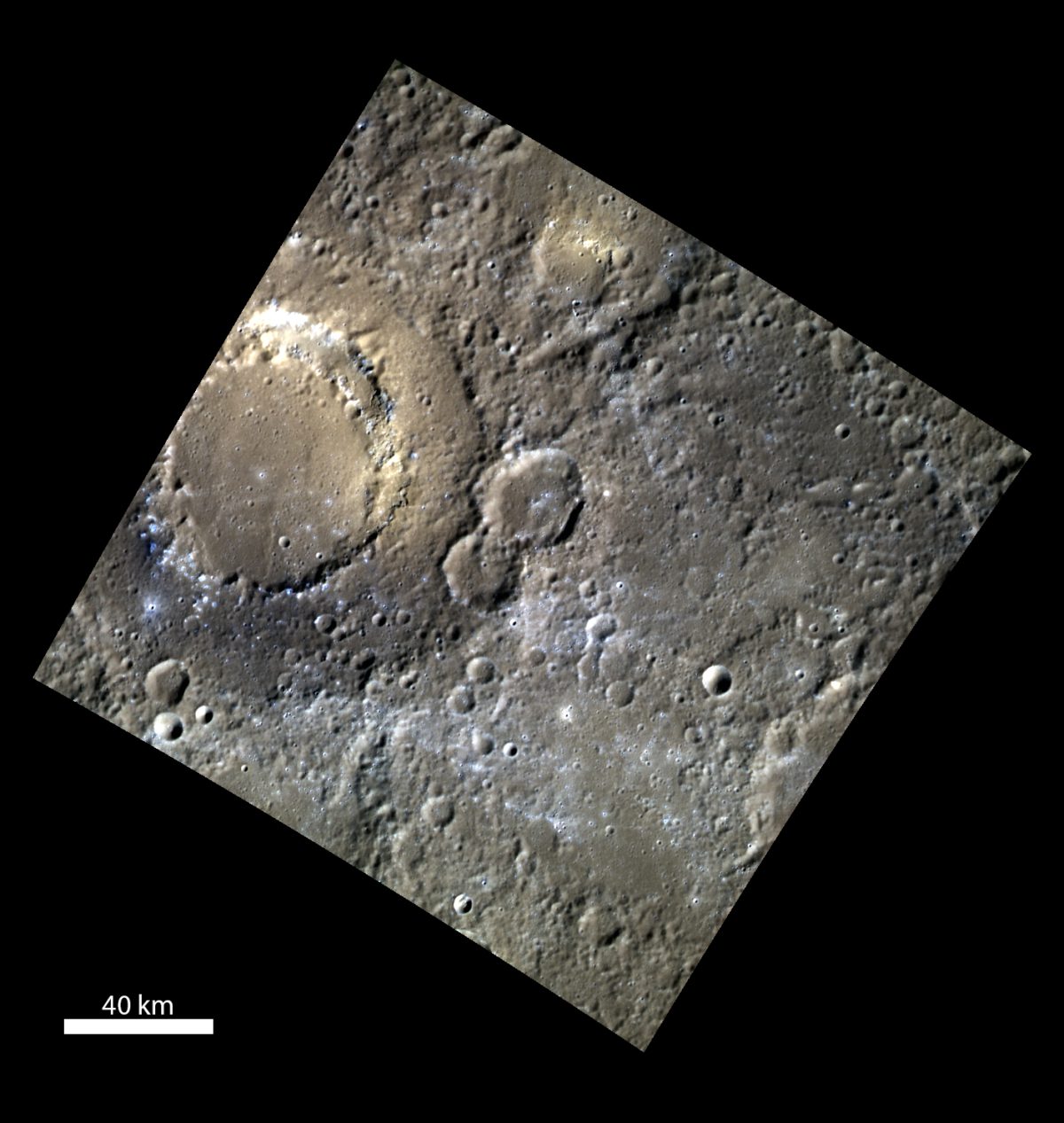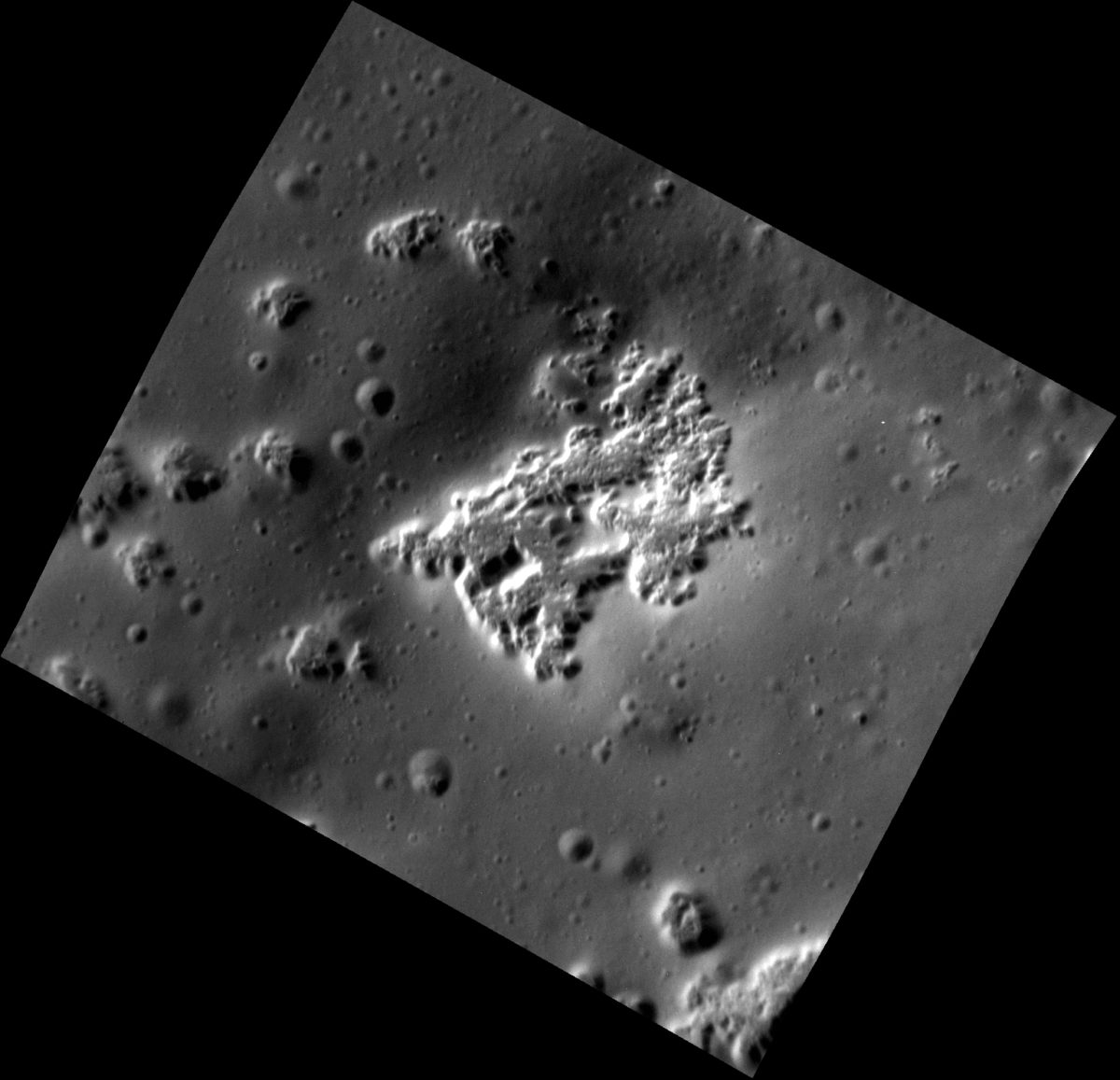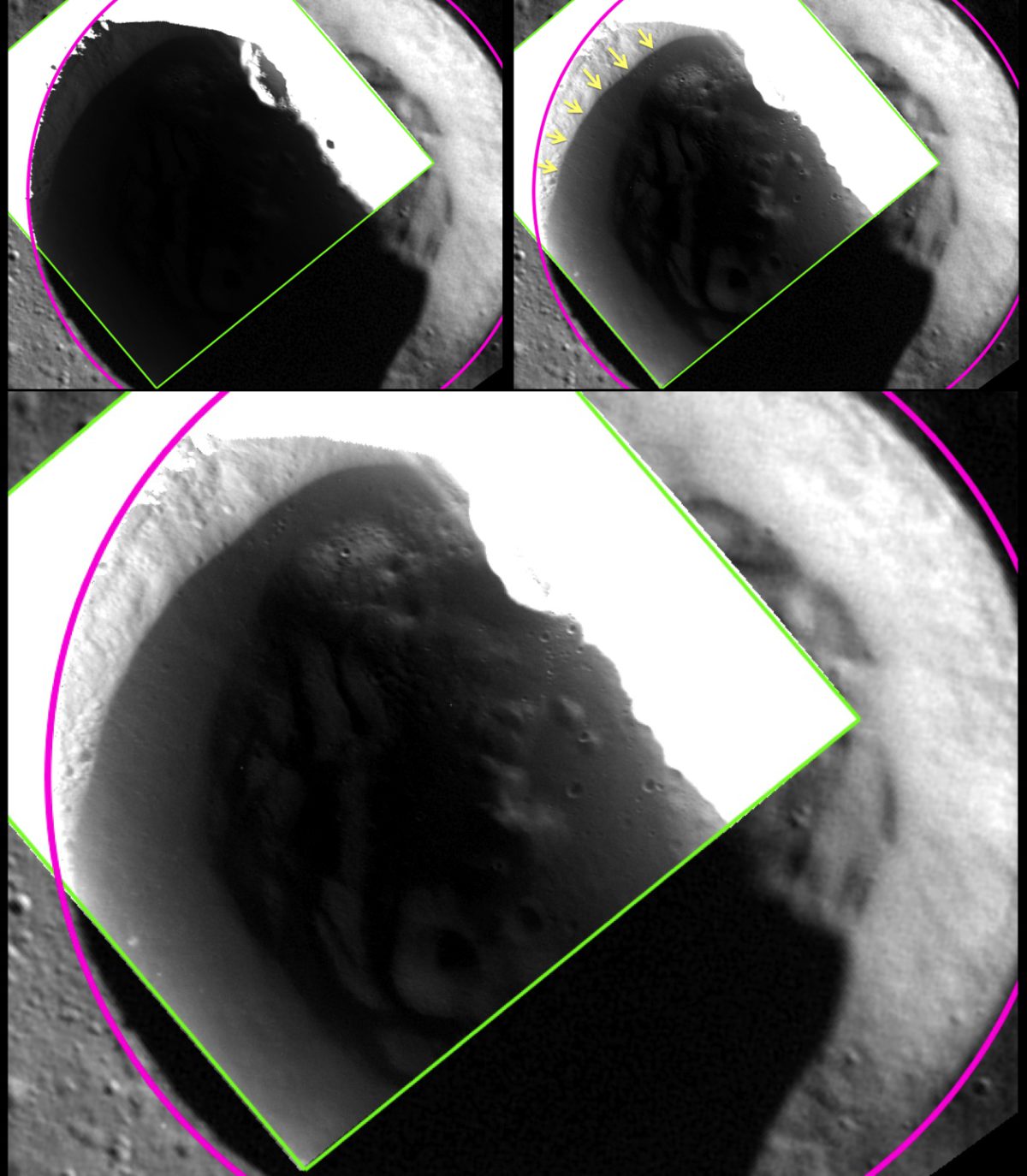Emily Lakdawalla • Mar 25, 2015
LPSC 2015: MESSENGER's low-altitude campaign at Mercury
The MESSENGER mission is nearly over. In fact, principal investigator Sean Solomon said at a press briefing last week, "the mission will come to a natural close, reaching a periapsis altitude of zero, otherwise known as impact on Mercury, on the 30th of April." You might think that the science team would be sad about the impending demise of their spacecraft, and Solomon did say that the end "will be sad to see." But the team presenting the briefing at last week's Lunar and Planetary Science Conference (LPSC) was all smiles, rightly proud of the fantastic data that has been returned so far from the low-altitude campaign. (There was also a full morning session about MESSENGER at LPSC, but as it conflicted with Rosetta, Curiosity, GRAIL, and Chang'e 3 I skipped the MESSENGER session, knowing I'd get a summary at the press briefing.)
The fact that MESSENGER is still flying at all is a major engineering achievement. To achieve its long life, the mission scrimped and saved on propellant, using solar sailing techniques during its cruise and miserly hydrazine allocation during its primary mission, enabling a lengthy extended mission. It is now literally running on fumes, maintaining its orbital altitude by venting helium gas (originally intended for pressurizing its fuel tanks) directly out its thrusters.
The second extended mission began on June 17, 2014, with the goal of examining Mercury from closer than ever before -- as close as 25 kilometers altitude. Getting closer to Mercury has meant higher-resolution imaging than ever before, of course, but it also permits resolution improvements in several other MESSENGER science data sets. Lower altitudes buy more detail in their data sets on the gravity and magnetic fields of Mercury, and also allow them to map out the location of hydrogen-rich (presumably water) deposits near the north pole from their neutron emissions. The session and briefing at LPSC focused on this low-altitude campaign.
Although the MESSENGER mission is about more than imaging, images stole the show in this presentation. My favorite image was this one, showing beautifully fluted gullies in the steep wall of a volcanic vent. The wall and its gullies cut across layers with different brightnesses. Outside the crater, the surface has been smoothed by a blanket of volcanic ash. Just gorgeous.

Among my favorite MESSENGER discoveries at Mercury are the mysterious terrain features known as "hollows," which I've written about extensively before. David Blewett shared some extremely high-resolution views of hollows within the Scarlatti basin. Here is a context image:

And here is the view from the low-altitude campaign, among the highest-resolution observations obtained during the mission at 3.8 meters per pixel, fifty times better than the photo above. "You could probably hike across it in half an hour," Blewett said. Yet, no matter how close MESSENGER gets to Mercury, it seems it rarely observes impact craters on top of hollows. Impact craters are the marker we use all over the solar system to age-date surfaces. Blewett said that the absence of craters means they can't be more than a few tens of millions of years old; "they may well be actively forming today." He went on to say that they are measuring the depths of hollows all over Mercury and finding that depth to be similar everywhere, just a few tens of meters.

Thomas Watters shared views of a different kind of small-scale feature on Mercury, one that has been newly revealed in the low-altitude campaign. We already knew that Mercury is covered with contractional features, wrinkles and scarps on its surface that have formed as the entire planet has cooled and shrunk. Watters showed that the curved upper surfaces of these scarps -- where Mercury's crust has bent as it has folded to accommodate the contraction -- bear little fractures. It's not in the slightest bit surprising that such fractures formed on Mercury's wrinkles; where the crust bends, it extends and cracks on the outside of the bend. There are very similar features on the Moon. What's surprising is how well-preserved they are. They are quite small features, with widths of at most 40 meters. Such small-scale features would be obscured over time by the formation of small impact craters. On the Moon, features like this are probably less than 50 million years old. On Mercury, Watters said, the impact crater rate is about three times that on the Moon, so you're talking about an age of around 15 million years old -- which might as well be yesterday, in geologic terms.

And then there are those ice-bearing polar craters. Actually Nancy Chabot wasn't discussing the close-to-polar ones with exposed surface ice; she shared images of slightly less polar ones, where we know that the interiors of the permanently shadowed craters are darker than the surrounding surface, not brighter. Chabot's work has already indicated that these craters contain ice below the surface, but closer to the surface the ice is covered with a mantle of carbon-rich material. "The low-altitude campaign has allowed us to see inside these craters," she said. "We can see into places where the Sun never shines on Mercury." The trick is that they set the exposure times on the photos to be long enough to use light reflected off of the sunlit, south-facing crater wall to see into the permanently shadowed areas. Here's one example. Take a look at it, and I'll explain more below.

The low-altitude image is outlined in a green square. Some of that image is completely white: this is sunlit surface, and is overexposed; the camera can see no details there, because it's too bright for the long exposure. All of the areas that are not completely white were in shadow. Within that shadowed region, there is a brighter area on the crater wall, and then a dark area; a sharp boundary (pointed out with yellow arrows) separates the light area from the dark area, both of which are in shadow.
Chabot explained that, like the fractures that Watters pointed out, this boundary is surprisingly sharp. Such a sharp boundary should be destroyed, feathered out, by small impacts; the fact that it is so sharp means that its sharpness is being maintained somehow. "Either the dark material was brought recently, or it is an ongoing process that keeps the boundary sharp over time." She said she had observed these sharp-edged boundaries in all the craters that she has successfully imaged, about 10 or 12 craters. Not all the images worked; it's a challenge to target and perfectly expose the photos to see all that detail in the shadows.
Now MESSENGER entering the "hover campaign, a short extension of the Second Extended Mission termed XM2-Prime (XM2')." The hover campaign brings the spacecraft's closest approach to Mercury even lower, to between 5 and 39 kilometers above the surface. Such low altitudes aren't great for imaging; the motion of the spacecraft is so fast with respect to the size of the camera field of view that motion blur is a problem. Instead, the magnetometer and neutron spectrometer will be the star instruments of the hover campaign.
But it's all going to be over soon. At the briefing, I asked the panel what new questions we have now that MESSENGER has visited and mapped Mercury. Blewett had expressed frustration earlier in his inability to identify the material responsible for forming the hollows on Mercury; the stuff has no spectral features in visible or near-infrared wavelengths that indicate its nature. He looked forward to BepiColombo, which will have a thermal emission spectrometer. "It should be able to tell us the particular minerals that are present, whereas now we're just making inferences. It'll be great to find out really for real what chemicals are down there in the hollows, what's the mystery darkening agent."
Larry Nittler said that one question MESSENGER set out to answer was why it has such a large core relative to its thin silicate shell, and "I think we still don't know the answer." MESSENGER found Mercury to have much more volatile elements than expected, which was taken as evidence against the hypothesis that a giant impact stripped off the proto-Mercury's mantle, "but it turned out those models were not very geochemical. I think many questions are still answerable with the data we will have obtained" by the end of the mission.
Watters said: "The really exciting thing is this shift in the paradigm of what Mercury really was. 20 or 30 years ago, part of the mission rationale is that this was a body that was arrested in its early phase. [By exploring it we were] looking back at world that was preserved in a state of 1 billion years old. That has changed radically; Mercury, like other objects in solar system, is far from dead. That opens up the door for continued exploration and new missions to understand why these objects now are turning out to be much more long-lived in their activity."
Nancy Chabot said: "Before this mission we had seen only 45% of the planet. It's no wonder we're in a different place now. BepiColombo has things it can do in the southern hemisphere," which MESSENGER didn't observe at high resolution because of its elliptical orbit. Chabot looks forward to a future in which we'd send a landed mission: "Let's put some rovers in hollows. An ice core from the poles would be fascinating."
Solomon wrapped it up by expressing a wish for future Mercury exploration: to find a meteorite from Mercury. "Think about how much we have learned from Moon and Mars meteorites. The dynamicists tell us that we have enough meteorites that there ought to be a population of meteorites from Mercury. We now have a recipe for what it should look like. We haven't found one yet. Unless theorists are way off base, we ought to. We might even find one soon. So we can hope in the next decade or even sooner, [we would find one and] it would lead to a tremendous leap in understanding."
You can watch the whole briefing for yourself here:
The Time is Now.
As a Planetary Defender, you’re part of our mission to decrease the risk of Earth being hit by an asteroid or comet.
Donate Today

 Explore Worlds
Explore Worlds Find Life
Find Life Defend Earth
Defend Earth

